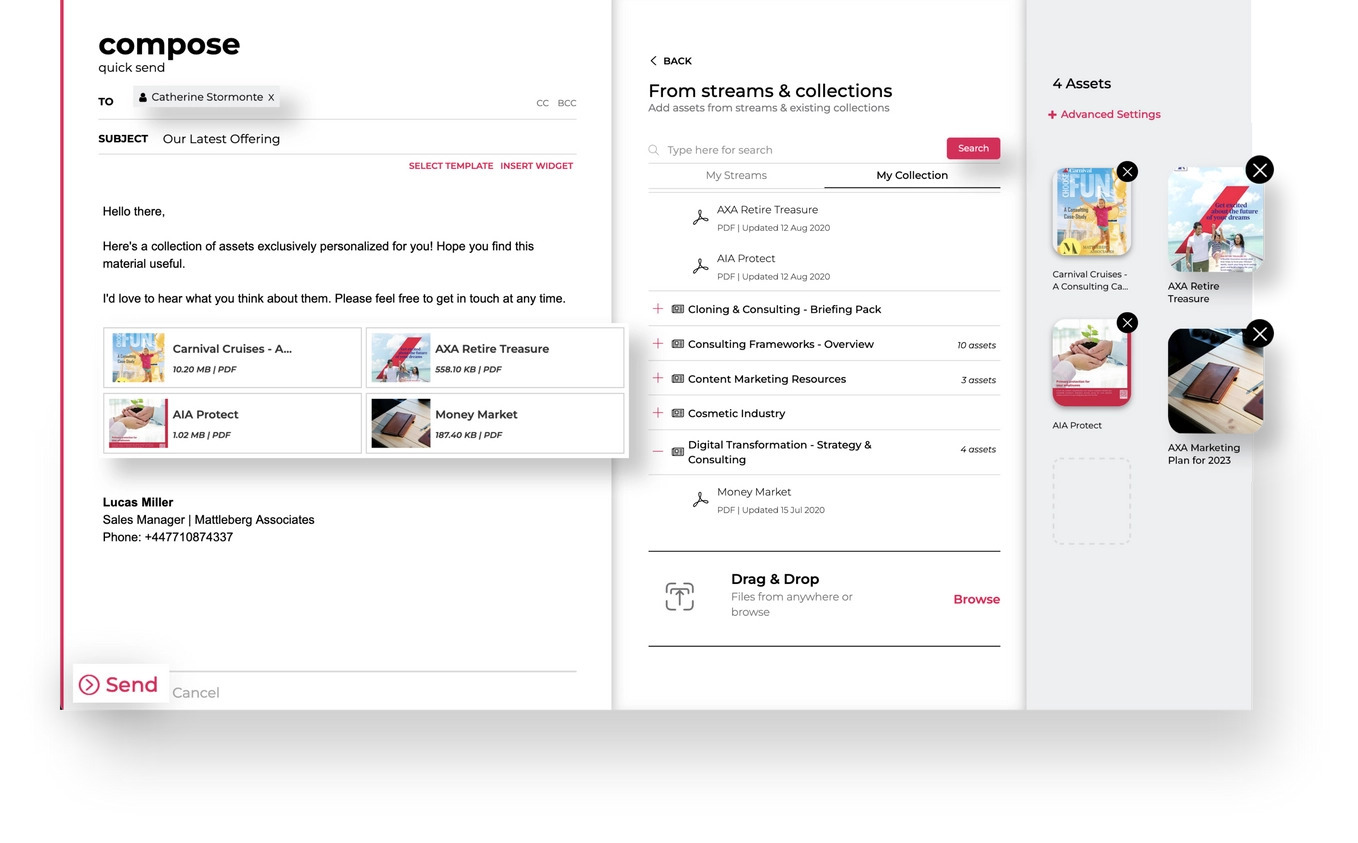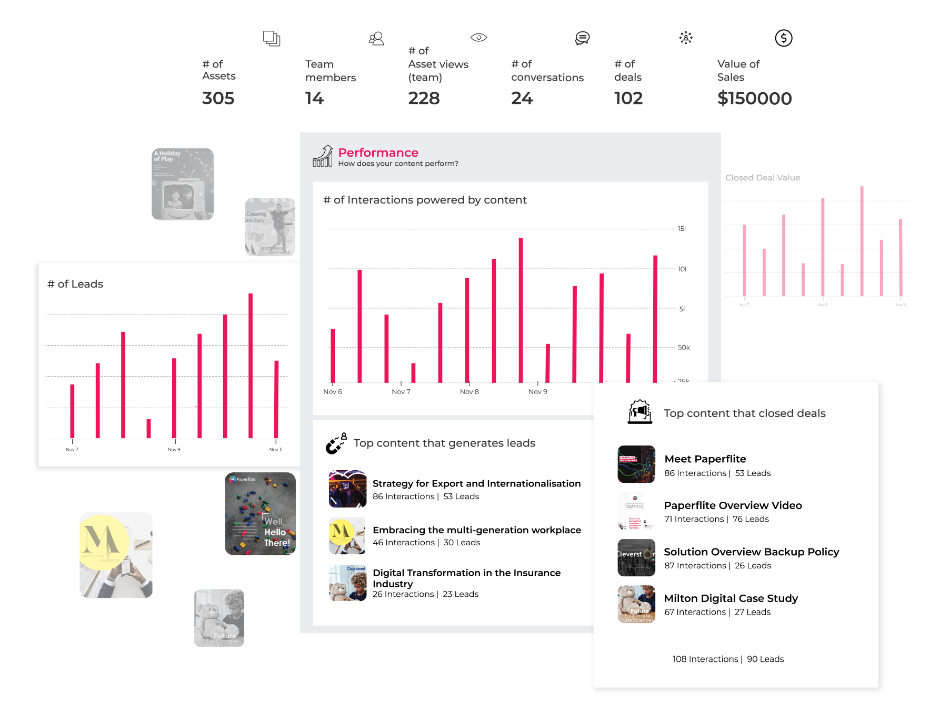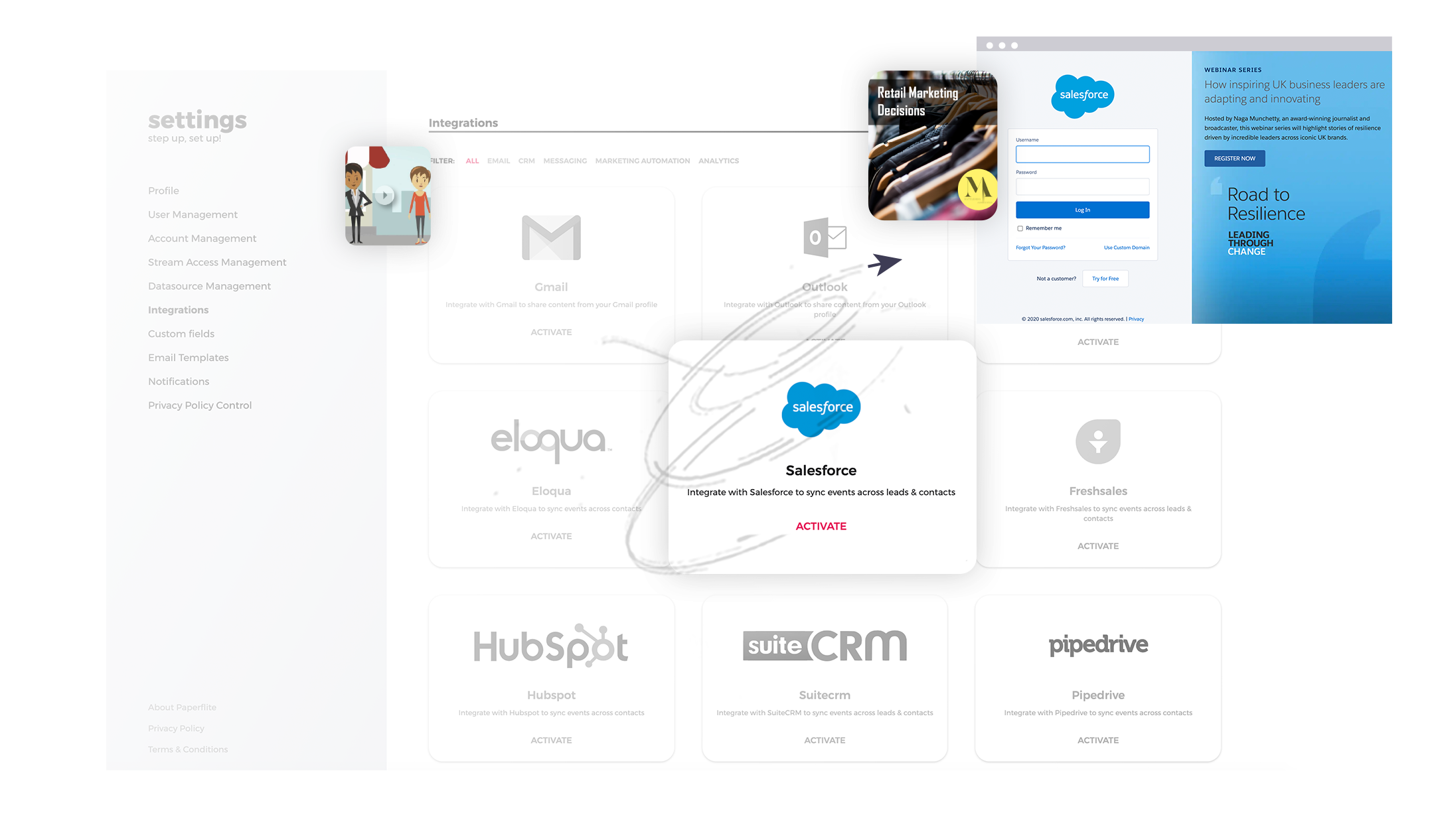Navigating the Revenue Enablement Maturity Model: A Guide for Scaling Your Business
Explore the concept of revenue enablement maturity and how it can help organizations improve their revenue enablement practices
Revenue enablement is a crucial aspect of any business that wants to drive revenue growth and succeed in today's fast-paced and ever-changing market. Revenue enablement refers to the process of empowering sales and marketing teams with the necessary tools, content, and resources to effectively engage with prospects and customers, and ultimately close more deals.
In this article, we will explore the concept of revenue enablement maturity model and how it can help organizations improve their revenue enablement practices. We will provide a detailed explanation of the revenue enablement maturity model, why it is needed, and what readers can expect to learn from this article.
Definition of Revenue Enablement Maturity Model:
The revenue enablement maturity model is a framework that helps organizations evaluate their current revenue enablement practices and identify areas for improvement. The model consists of four stages, each with its own set of characteristics, challenges, and best practices.
The four stages of the revenue enablement maturity model are as follows:
- Ad-hoc
- Foundational
- Strategic
- Optimized
Why a Maturity Model is Needed?
A maturity model is needed because it provides a structured approach for organizations to assess their current state and identify opportunities for improvement. By using a maturity model, organizations can gain a better understanding of where they are in their revenue enablement journey and what steps they need to take to advance to the next level.
Without a maturity model, organizations may struggle to identify gaps in their revenue enablement practices and may not have a clear roadmap for improvement. By using a maturity model, organizations can establish a baseline for their revenue enablement practices, track progress over time, and make data-driven decisions to improve their revenue enablement efforts.
In this article, you will learn about the four stages of the revenue enablement maturity model, including the characteristics, challenges, and best practices associated with each stage.
Understanding the Four Stages of Revenue Enablement
Stage 1: Ad Hoc - No truly defined roles or responsibilities
At the Ad Hoc Stage, revenue enablement is not yet a formal or structured process within the organization. Teams work independently, without any coordination or alignment, resulting in suboptimal performance. Sales, marketing, and customer success teams may not be aligned in terms of goals, messaging, or processes.
They may be using different tools and resources, which can lead to inconsistent messaging and missed opportunities. In this stage, businesses may also experience a lack of collaboration between different teams, which can result in duplicated efforts and wasted resources.
To move beyond the Ad Hoc Stage, organizations need to recognize the importance of revenue enablement and start taking steps towards building a more structured approach.
This might involve:
- Defining the roles and responsibilities of sales, marketing, and customer success teams
- Identifying the key processes required for revenue enablement, such as content creation and distribution, training and coaching, and cross-functional collaboration
- Establishing metrics and KPIs to measure the success of revenue enablement initiatives
- Investing in tools and resources that support revenue enablement, such as CRM, marketing automation, and sales enablement software
Stage 2: Foundational - Has an understanding of what is enablement
At the Foundational Stage, businesses start building the foundation for a more structured and effective revenue enablement function. The focus is on defining the processes, tools, and metrics required for effective revenue enablement.
Establishing a revenue enablement team or function that is responsible for coordinating revenue enablement activities across different teams. Creating a centralized content repository to enable teams to access and share relevant content. Developing processes for creating and distributing content, such as a content calendar or a content creation workflow.

Investing in training and coaching programs to help team members develop the skills and knowledge required to perform their roles effectively. Defining shared metrics and KPIs that align with overall business goals and enable different teams to measure their impact on revenue growth
To move beyond the Foundational Stage, organizations need to continue to evolve their revenue enablement capabilities and focus on driving continuous improvement.
This might involve:
- Investing in more advanced tools and resources, such as AI-powered sales analytics,
- building more sophisticated processes for lead generation and lead nurturing.
- At this stage, businesses should also focus on developing a culture of continuous learning and improvement.
- where teams are encouraged to experiment, take risks, and share their successes and failures.
Stage 3: Strategic - Revenue enablement reaches Progressive stage
At the third stage of the revenue enablement maturity model, organizations have a strategic approach to revenue enablement. This means that sales enablement efforts are well-coordinated and aligned with the organization's overall goals, and there is a focus on continuous improvement.
Common challenges at this stage include a lack of integration with other departments, limited ability to measure and report on sales enablement efforts, and a lack of focus on customer needs. Sales reps may still lack the skills and knowledge they need to be successful, and there may be a lack of collaboration between sales and marketing.
Get Granular Information About Every Content Being Sent
To move beyond this stage, organizations should focus on optimizing their sales enablement process. This could include developing a more customer-centric approach, establishing clear metrics and reporting mechanisms, and aligning sales enablement efforts with other departments. It's also important to assess the skills and knowledge of sales reps and provide ongoing training and coaching.
Best practices for moving beyond the strategic stage include developing a customer-focused sales enablement strategy, aligning sales and customer success efforts, and leveraging data and analytics to optimize sales enablement efforts.
Stage 4: Optimized - long term, tied to business objective
In the optimized stage, organizations have successfully integrated revenue enablement practices into their overall sales strategy. At this stage, organizations have a highly efficient revenue enablement process, with streamlined workflows and automated systems that drive revenue growth.
The primary focus of organizations in the optimized stage is to continually improve and optimize their revenue enablement process. They are leveraging data and analytics to track performance and identify areas for improvement.
Key challenges in the optimized stage include maintaining a consistent level of performance, adapting to changes in the market, and continuously refining the revenue enablement process. To maintain this stage, organizations need to continuously analyze and optimize their processes to stay ahead of the competition.
Key Benefits of the Revenue Enablement Maturity Model
The Revenue Enablement Maturity Model is an essential tool for organizations looking to evaluate and improve their revenue enablement practices. The model provides a clear framework for assessing an organization's current revenue enablement maturity level and identifying areas for improvement.
By using the model, organizations can:
- Gain a comprehensive understanding of their revenue enablement practices
- Identify areas for improvement and prioritize initiatives
- Align sales and marketing teams around revenue enablement best practices
- Establish a roadmap for achieving revenue growth goals
- The Revenue Enablement Maturity Model has been successful in helping organizations of all sizes and industries improve their revenue enablement practices. By following the model's best practices and recommendations, organizations can achieve significant revenue growth and success.
Best Practices for Implementing the Model Across the Organization
To implement the Revenue Enablement Maturity Model effectively, it's important to start with a pilot program, develop a clear roadmap, provide training and resources, communicate the benefits, and measure progress. Paperflite's features can help with each of these steps:
Start with a pilot program: Paperflite's analytics and reporting capabilities allow you to track the performance of your content and identify which pieces are resonating with your audience. Use this data to create a pilot program that incorporates your top-performing content, and iterate based on the results.
Develop a roadmap: Paperflite's content management features enable you to organize and categorize your content effectively, making it easier to identify which pieces are relevant for each stage of the buyer's journey. Use this to create a roadmap that outlines which content to use at each step, and when to introduce new pieces.
Provide training and resources: Paperflite's training and onboarding resources enable you to train your team on the model and how to use the platform effectively. This includes tutorials on how to create and manage content, as well as best practices for using the platform to support the Revenue Enablement Maturity Model.
Communicate the benefits: Use Paperflite's email tracking and engagement features to communicate the benefits of the model to your team, and track their engagement with the messages. This can help you understand which employees may need additional support or training, and provide it as needed.
Measure and monitor progress: Paperflite's analytics and reporting capabilities enable you to track the performance of your content and monitor progress towards your goals. Use this data to identify which pieces are driving revenue, and which need to be adjusted or retired.

Challenges and Considerations:
Implementing the revenue enablement maturity model across the organization can be challenging, and it is essential to consider some of the common challenges and potential roadblocks.
Common challenges organizations face when implementing the model include:
- Resistance to change: Implementing the model requires a significant change in the way the organization approaches revenue enablement. There may be resistance to change, making it challenging to implement the model effectively.
- Lack of resources: Implementing the model can be resource-intensive, and organizations may not have the necessary resources to implement the model effectively.
- Lack of alignment: The revenue enablement maturity model involves multiple teams across the organization, and it is essential to ensure everyone is aligned and working towards a common goal.
Tips for overcoming those challenges include:
- Build a strong business case: Building a strong business case can help to overcome resistance to change. The business case should highlight the benefits of the model, including increased revenue and improved customer satisfaction.
- Allocate resources effectively: It is essential to allocate resources effectively to ensure the model is implemented effectively. This can be achieved through the use of a phased approach, starting with a pilot program.
- Communicate effectively: Effective communication is critical to ensuring everyone is aligned and working towards a common goal. It is essential to communicate the benefits of the model.
Potential Roadblocks and How to Avoid Them:
Implementing the Revenue Enablement Maturity Model can be challenging, and organizations may face roadblocks along the way. Here are some common roadblocks and tips for avoiding them:
- Lack of buy-in: If employees don't see the value in the model or don't understand why it's being implemented, they may be resistant to the changes. To avoid this, it's essential to communicate the benefits of the model and involve employees in the implementation process.
- Inadequate training: If employees don't receive the necessary training and resources, they may not be able to effectively implement the model. To avoid this, ensure that all employees receive comprehensive training on the model and any supporting tools or technologies.
- Resistance to change: Implementing a new model can be challenging, and some employees may be resistant to change. To avoid this, involve employees in the implementation process, communicate the benefits of the model, and provide ongoing support.
- Lack of leadership support: If leadership isn't fully committed to the implementation of the model, it may not be successful. To avoid this, ensure that leadership is fully committed to the model and that they are involved in the implementation process.
Considerations for Ensuring Long-Term Success:
Implementing the Revenue Enablement Maturity Model is not a one-time event. To ensure long-term success, organizations need to consider the following:
- Ongoing training and support: To ensure that employees continue to effectively implement the model, ongoing training and support are essential. This includes regular refresher training, access to support resources, and a system for addressing any issues or questions that arise.
- Continuous improvement: The Revenue Enablement Maturity Model is designed to drive continuous improvement. To ensure that this happens, organizations need to regularly assess their current maturity level, set new goals for improvement, and make adjustments as needed.
- Integration with other processes: The Revenue Enablement Maturity Model should be integrated with other sales and marketing processes to ensure that it's fully aligned with the organization's overall goals and objectives.

- Alignment with customer needs: To ensure long-term success, the model needs to be aligned with customer needs and preferences. This requires a deep understanding of the customer and ongoing communication to ensure that the organization is meeting their needs.
Conclusion:
The Revenue Enablement Maturity Model is a powerful framework for improving revenue growth and sales effectiveness across an organization. To successfully implement the model, organizations need to assess their current maturity level, set goals for improvement, and roll out the model across the organization.
They also need to provide ongoing training and support, drive continuous improvement, integrate the model with other processes, and ensure alignment with customer needs. Paperflite can help with continuous improvement by providing analytics and reporting features that enable organizations to track their progress, identify areas for improvement, and make data-driven decisions.
With the help of Paperflite, organizations can successfully implement the Revenue Enablement Maturity Model and achieve long-term growth and success.
